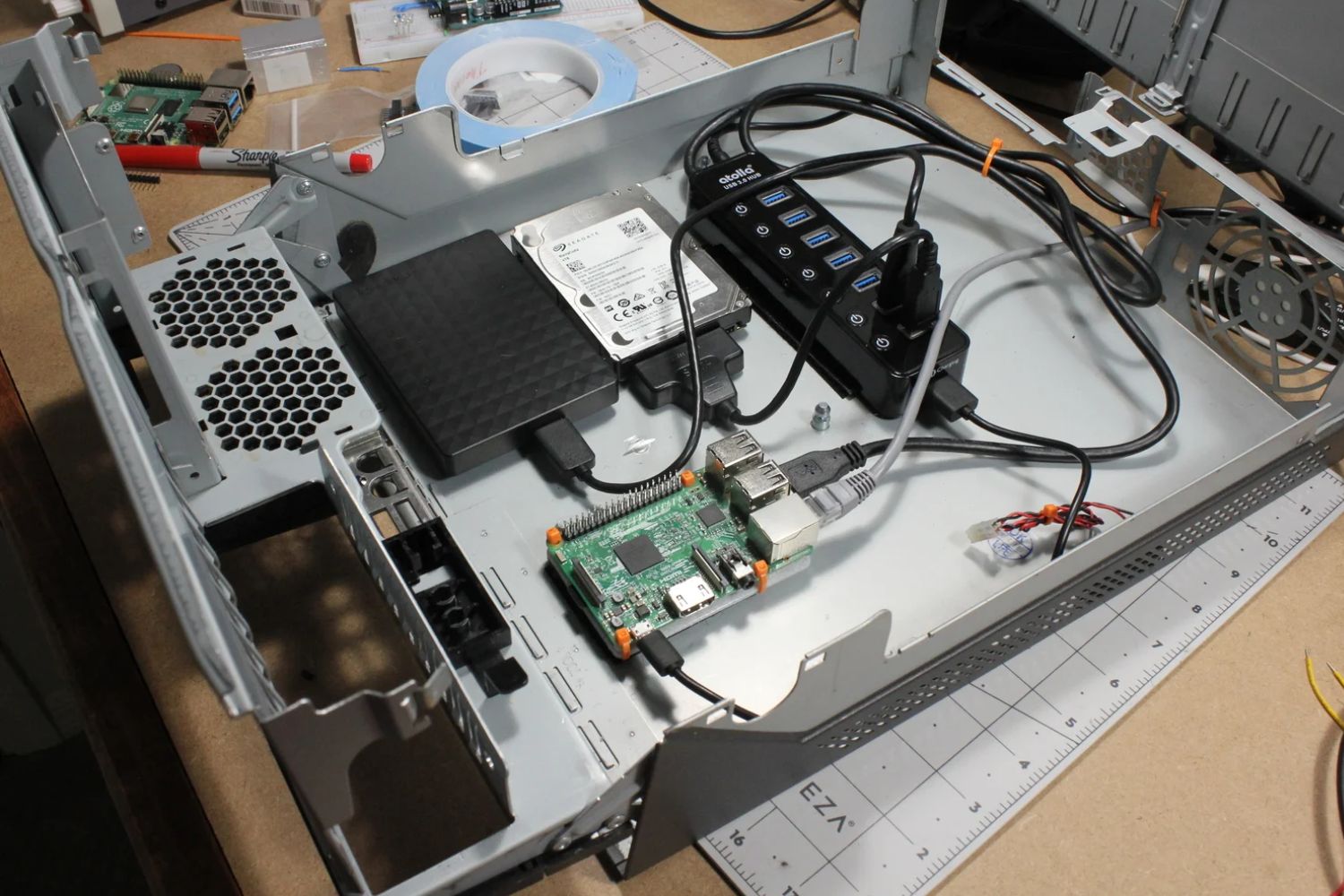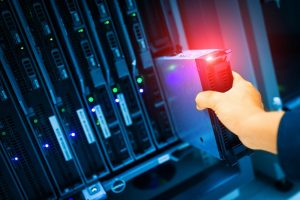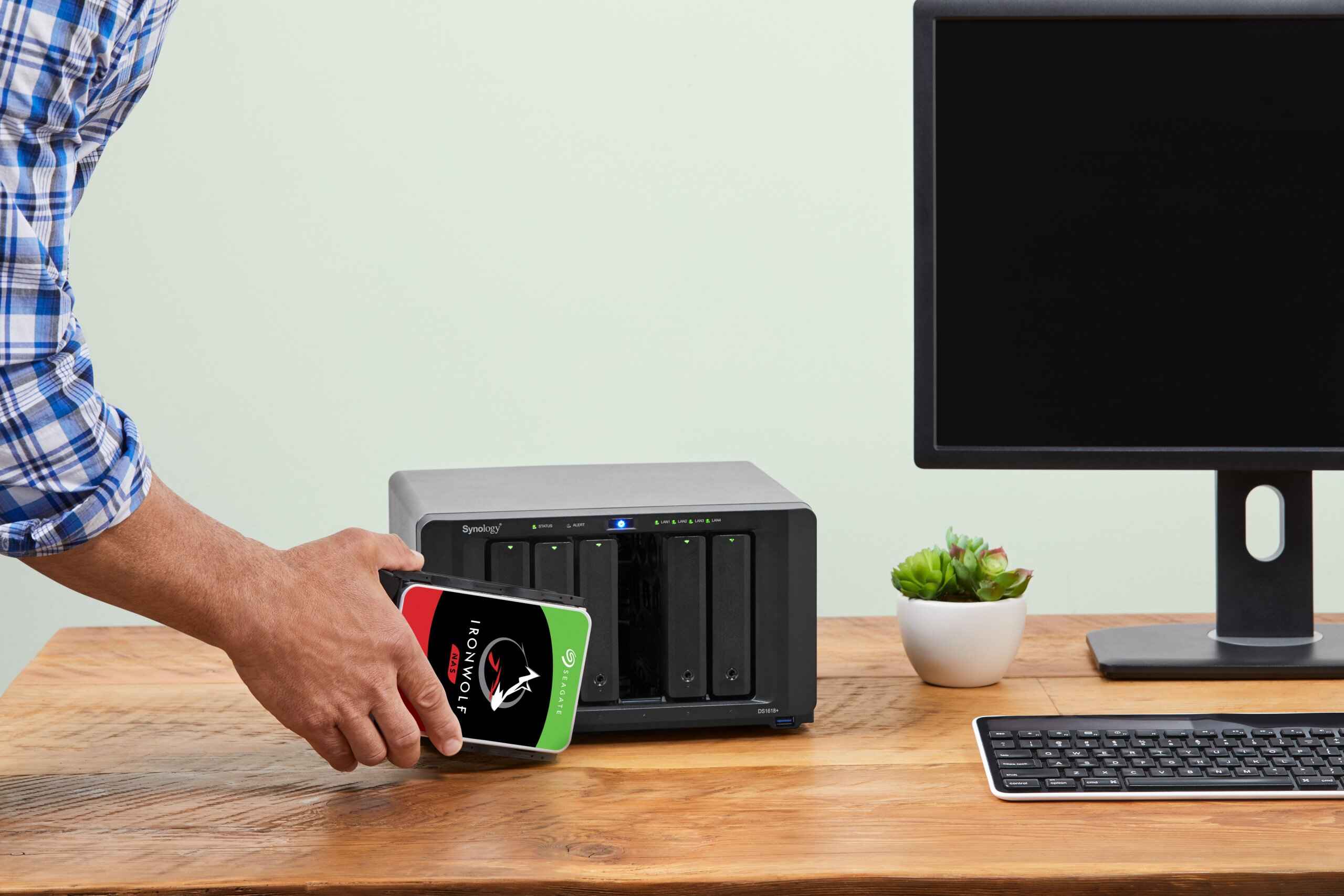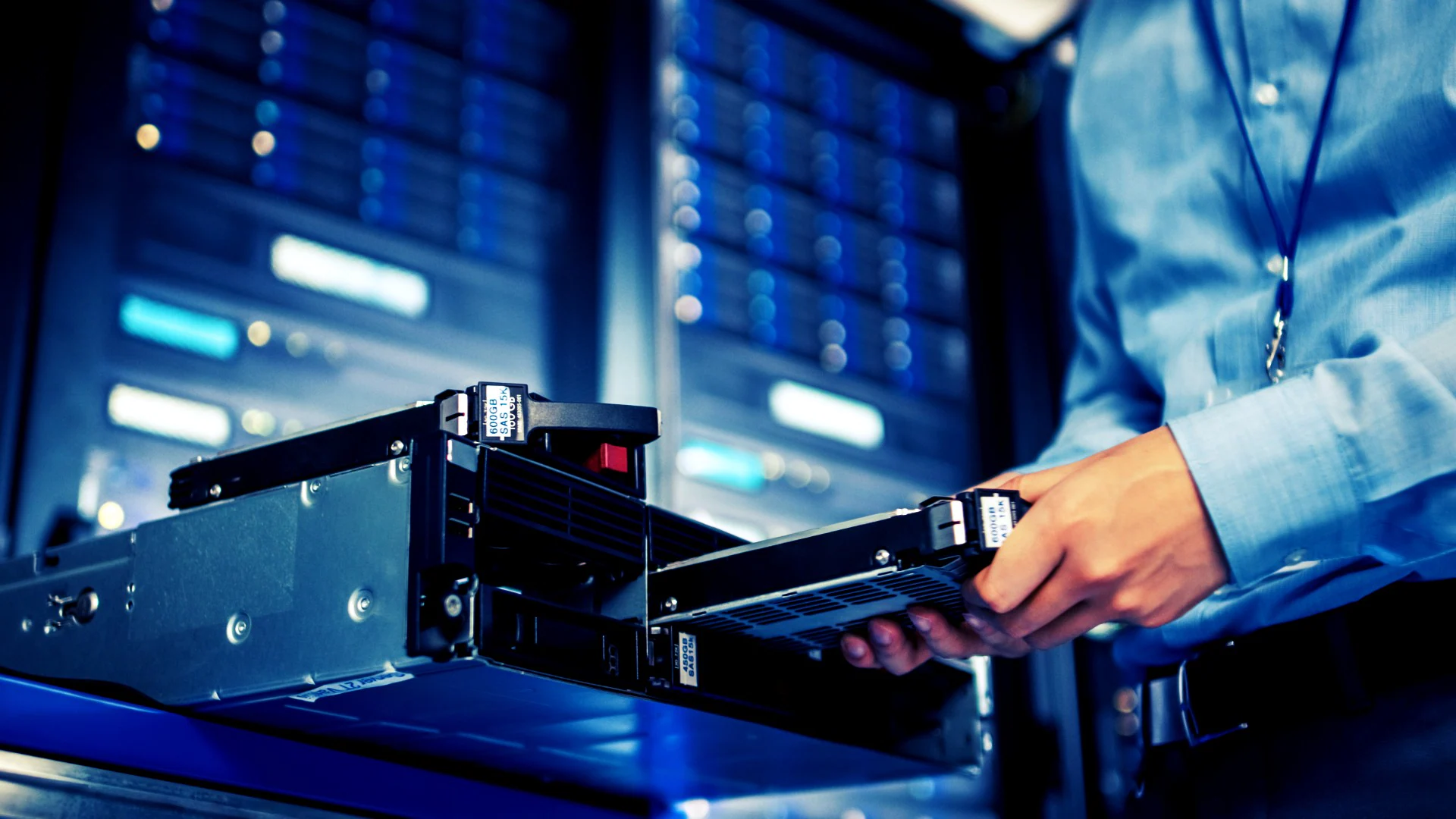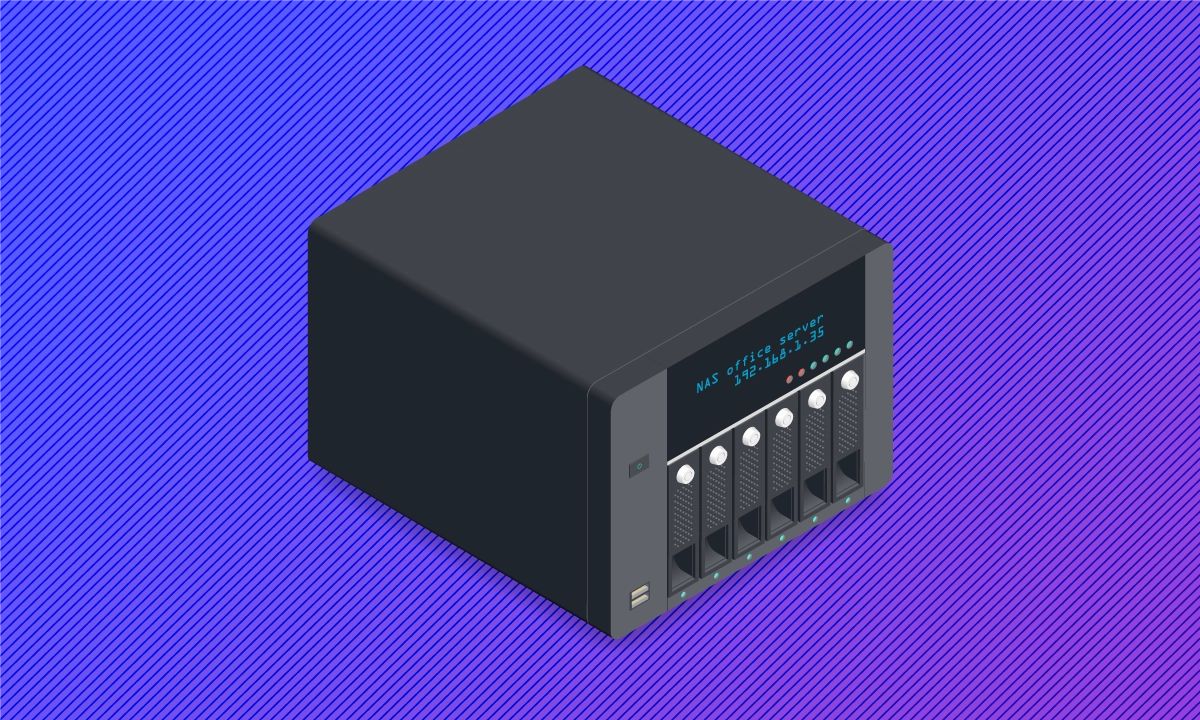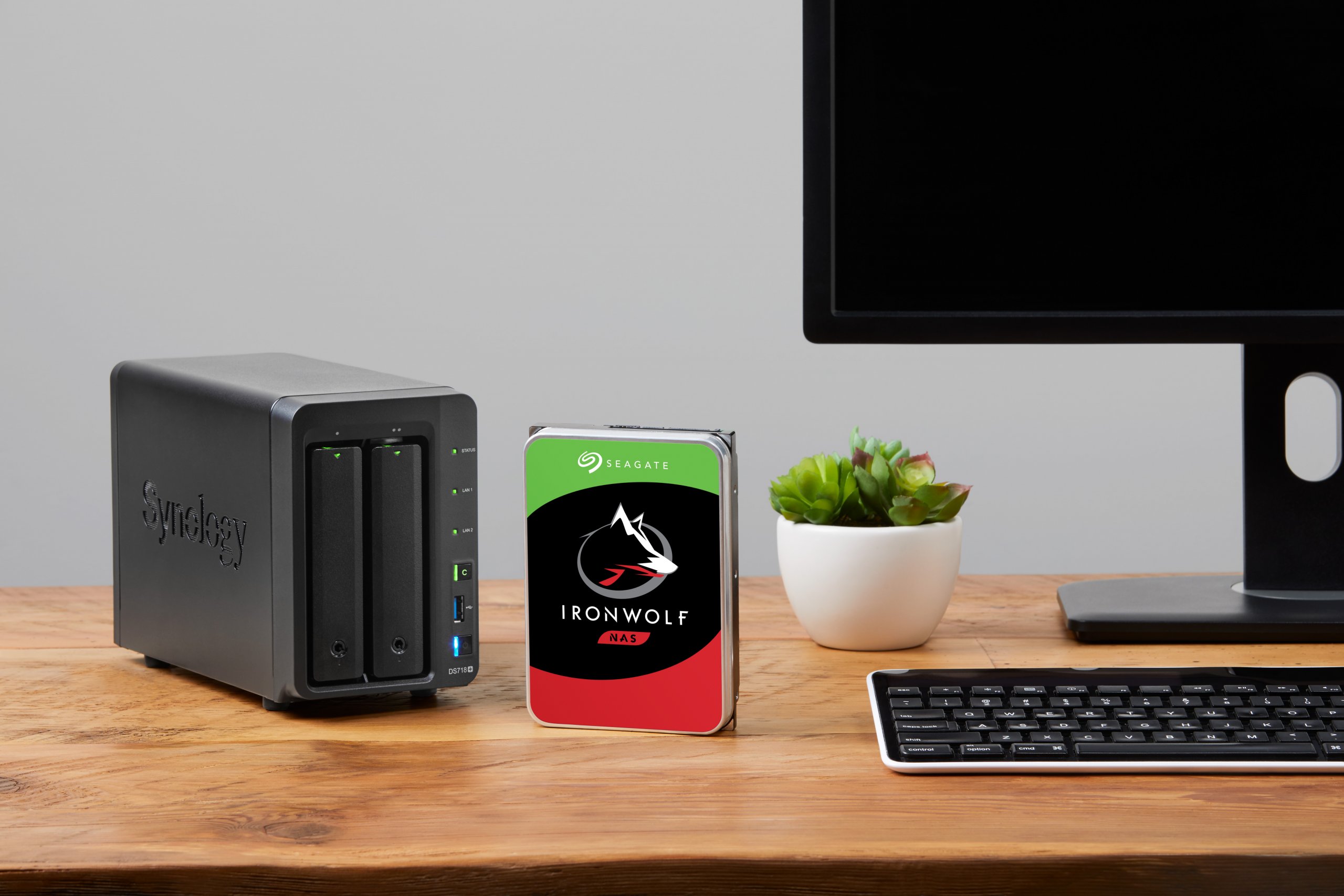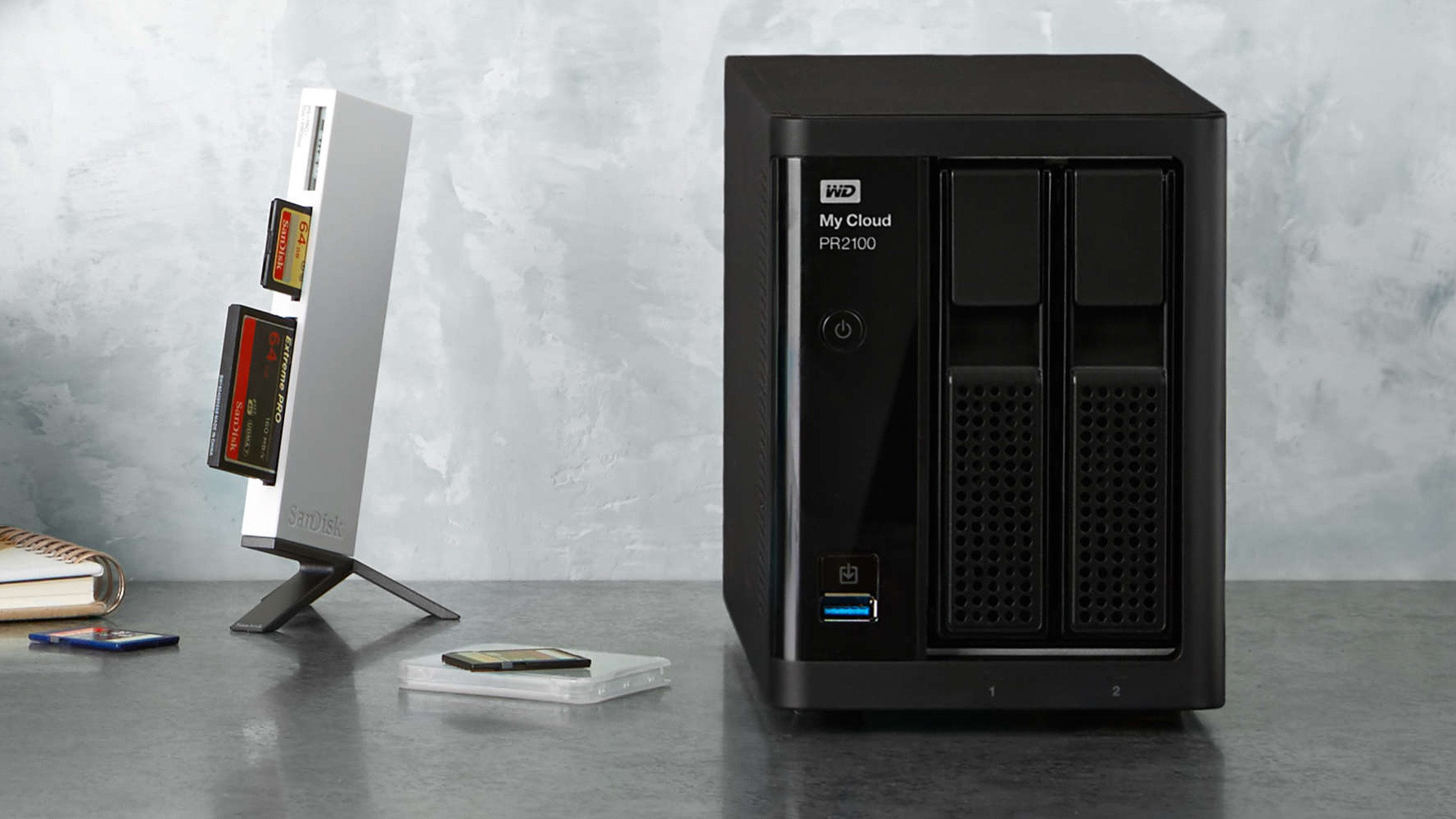Introduction
Welcome to the world of Network Attached Storage (NAS), a revolutionary solution that offers seamless access to your data from multiple devices. In this digital age, where data storage and accessibility are paramount, NAS serves as a versatile and efficient option for individuals and businesses alike. Whether you are a tech enthusiast, a small business owner, or a home user seeking a reliable storage solution, understanding how to use NAS can greatly enhance your data management capabilities.
As we delve into the intricacies of NAS, you will gain insights into its functionality, the benefits it offers, and how to effectively integrate it into your daily operations. By the end of this guide, you will be equipped with the knowledge and skills to leverage NAS to its fullest potential, ensuring that your data remains secure, accessible, and backed up.
Let's embark on this enlightening journey to explore the world of NAS and unlock its myriad possibilities. Whether you are a novice or a seasoned tech enthusiast, this guide will cater to your needs, providing valuable information and practical tips for harnessing the power of NAS. So, fasten your seatbelts and get ready to unravel the wonders of NAS!
What is Network Attached Storage (NAS)?
Network Attached Storage, commonly referred to as NAS, is a dedicated file storage device that provides local network access to a group of users. Unlike traditional storage solutions that are directly attached to a single computer, NAS operates as a centralized repository accessible to multiple devices, including computers, laptops, smartphones, and tablets within a local area network (LAN).
NAS devices are equipped with their own operating systems and file management capabilities, allowing users to store, retrieve, and manage data efficiently. These devices are designed to be compact, energy-efficient, and easily scalable, making them suitable for a wide range of applications, from personal home use to enterprise-level data storage.
One of the defining features of NAS is its ability to run various applications, such as media servers, backup utilities, and cloud synchronization services, transforming it into a versatile platform for managing and accessing digital content. Additionally, NAS devices often support RAID (Redundant Array of Independent Disks) configurations, which provide data redundancy and protection against disk failures, ensuring the integrity and availability of stored information.
Furthermore, NAS facilitates seamless remote access, allowing users to retrieve and manage their data from anywhere with an internet connection. This remote accessibility is particularly beneficial for businesses with remote teams, enabling collaboration and data sharing without compromising security.
In essence, NAS serves as a reliable, flexible, and cost-effective storage solution that caters to the evolving needs of modern data management. Its ability to consolidate and streamline data storage, access, and backup processes makes it an indispensable asset for individuals and organizations seeking efficient data management solutions.
Benefits of Using NAS
Network Attached Storage (NAS) offers a myriad of benefits that cater to the diverse needs of users across various domains. Whether you are a home user, a small business owner, or a large enterprise, the advantages of integrating NAS into your data management strategy are plentiful and impactful.
- Centralized Data Storage: NAS provides a centralized repository for storing and organizing data, eliminating the need for scattered storage solutions across different devices. This centralized approach simplifies data management and enhances accessibility.
- Multi-Device Accessibility: With NAS, users can access their data from multiple devices within the local network, promoting seamless collaboration and data sharing. Whether it’s a desktop computer, laptop, smartphone, or tablet, NAS ensures consistent accessibility across diverse platforms.
- Data Redundancy and Protection: NAS devices often support RAID configurations, offering data redundancy and protection against disk failures. This safeguard ensures that critical data remains intact and accessible even in the event of hardware malfunctions.
- Remote Access and Synchronization: NAS facilitates remote access to data, enabling users to retrieve, upload, and synchronize files from anywhere with an internet connection. This feature is particularly valuable for remote workers, enabling seamless collaboration and data management.
- Media Streaming and Server Capabilities: Many NAS devices are equipped with media server functionalities, allowing users to stream multimedia content to compatible devices such as smart TVs and media players. This transforms NAS into a versatile platform for entertainment and media management.
- Automated Backup and Data Protection: NAS devices often include built-in backup utilities that automate the process of backing up critical data. This proactive approach to data protection safeguards against data loss and minimizes the impact of unforeseen events.
- Scalability and Flexibility: NAS solutions are highly scalable, allowing users to expand storage capacity as their data requirements grow. This flexibility ensures that NAS can adapt to evolving storage needs without significant disruptions.
By harnessing these benefits, users can optimize their data management workflows, enhance data security, and streamline access to critical information, ultimately improving productivity and efficiency across various personal and professional contexts.
Choosing the Right NAS Device
When selecting a Network Attached Storage (NAS) device, it’s essential to consider various factors to ensure that the chosen device aligns with your specific storage and accessibility requirements. With a wide array of NAS devices available in the market, each offering unique features and capabilities, making an informed decision is crucial to harnessing the full potential of NAS.
- Storage Capacity: Assess your current and anticipated storage needs to determine the ideal capacity for your NAS device. Consider factors such as the size of your data, the number of users accessing the NAS, and potential data growth over time.
- RAID Support: Evaluate the RAID configurations supported by the NAS device. Depending on your data protection needs, choose a device that offers the desired level of data redundancy and fault tolerance through RAID 0, 1, 5, or other configurations.
- Processor and Memory: Consider the processing power and memory capacity of the NAS device, especially if you intend to run resource-intensive applications or multiple concurrent tasks. A robust processor and ample memory can enhance the device’s performance and multitasking capabilities.
- Number of Drive Bays: Determine the number of drive bays required based on your storage capacity and expansion plans. Devices with multiple drive bays offer scalability and flexibility, allowing for easy expansion of storage capacity as needed.
- Connectivity and Expansion Options: Assess the connectivity options, such as Ethernet ports, USB ports, and expansion slots, to ensure compatibility with your existing network infrastructure and peripheral devices. Additionally, consider future expansion needs and compatibility with emerging technologies.
- Operating System and Application Ecosystem: Explore the NAS device’s operating system and available applications. A user-friendly interface, robust app ecosystem, and regular software updates contribute to a seamless and feature-rich user experience.
- Data Protection and Security Features: Prioritize devices with robust data protection features, including encryption, access controls, and integrated backup solutions. Security measures are crucial for safeguarding sensitive data and ensuring compliance with data protection regulations.
- Vendor Support and Community: Research the reputation of the NAS device’s vendor, including the availability of customer support, firmware updates, and an active user community. A responsive and supportive vendor can significantly enhance the long-term usability and reliability of the device.
By carefully evaluating these factors and aligning them with your specific use case, you can confidently select a NAS device that meets your storage, accessibility, and performance requirements, empowering you to optimize data management and collaboration within your network environment.
Setting Up Your NAS
Setting up a Network Attached Storage (NAS) device involves several key steps to ensure seamless integration into your network environment and efficient data management. Whether you are a home user or a business professional, the following guidelines will assist you in setting up your NAS with ease and precision.
- Physical Installation: Begin by physically installing the NAS device in a suitable location within your network environment. Ensure that the device is placed in a well-ventilated area with adequate airflow to prevent overheating.
- Network Connectivity: Connect the NAS device to your local area network (LAN) using an Ethernet cable. Ensure that the network connection is stable and that the NAS device is accessible to all intended users within the network.
- Power On and Initialization: Power on the NAS device and allow it to initialize. Follow the manufacturer’s instructions for the initial setup process, which may involve accessing the device’s web-based interface or using dedicated setup utilities provided by the manufacturer.
- Configuration and Setup: Access the NAS device’s administrative interface to configure essential settings, such as network parameters, user accounts, shared folders, and security options. Customize these settings based on your specific requirements and data access policies.
- Storage Configuration: Configure the storage settings, including RAID levels, disk formatting, and allocation of storage space for different purposes, such as data storage, backup, and media streaming. Optimize the storage configuration to align with your data protection and accessibility needs.
- Access Control and Permissions: Define access control policies and user permissions to regulate data access within the NAS environment. Assign appropriate user roles and permissions to ensure secure and controlled access to sensitive data and resources.
- Backup and Synchronization: Set up automated backup tasks and synchronization options to safeguard critical data and ensure data consistency across devices. Configure backup schedules and retention policies to maintain data integrity and protection.
- Testing and Validation: Thoroughly test the NAS device’s functionality, including data access, file sharing, media streaming, and remote access capabilities. Validate the setup by accessing the NAS from different devices and user accounts to ensure seamless operation.
- Documentation and Training: Document the NAS setup and configuration details for future reference, including network diagrams, user manuals, and operational procedures. Provide training to users on accessing and utilizing the NAS effectively.
By following these steps and customizing the setup process to suit your specific requirements, you can establish a robust and reliable NAS environment that enhances data accessibility, security, and collaboration within your network.
Accessing Your NAS
Accessing your Network Attached Storage (NAS) device is a straightforward process that enables users to retrieve, manage, and share data from various devices within the local network and beyond. Whether you are at home, in the office, or on the go, accessing your NAS empowers you to leverage its storage and collaboration capabilities effectively.
Here are the key methods for accessing your NAS:
- Local Network Access: Within your local area network (LAN), you can access your NAS by simply navigating to its network address using a file explorer or file manager on your computer or other devices. By entering the NAS’s network path or IP address, you can browse and interact with the shared folders and files stored on the device.
- Remote Access via Web Interface: Many NAS devices offer web-based interfaces that allow users to access and manage the NAS remotely through a web browser. By entering the NAS’s remote access URL or IP address, users can securely log in to the device’s interface, providing access to data, settings, and administrative controls from anywhere with an internet connection.
- Mobile Applications: NAS vendors often provide dedicated mobile applications that enable users to access and manage their NAS from smartphones and tablets. These applications offer intuitive interfaces for browsing files, streaming media, and performing administrative tasks, providing seamless access to NAS resources on the go.
- Cloud Synchronization: Some NAS devices offer cloud synchronization capabilities, allowing users to synchronize selected files and folders with cloud storage services. This feature enables access to NAS data from any internet-connected device, providing flexibility and mobility in data retrieval and management.
- Remote File Access Protocols: NAS devices support various remote file access protocols, such as FTP (File Transfer Protocol), SFTP (Secure File Transfer Protocol), and WebDAV (Web Distributed Authoring and Versioning), enabling users to access their NAS resources using compatible client applications and protocols.
By leveraging these access methods, users can seamlessly retrieve, manage, and share data stored on their NAS, fostering efficient collaboration and data utilization across diverse devices and locations. Whether accessing files for personal use, collaborative projects, or remote work scenarios, the flexibility and accessibility of NAS enrich the user experience and productivity.
Securing Your NAS
Securing your Network Attached Storage (NAS) is paramount to safeguarding sensitive data, preserving the integrity of stored information, and mitigating the risk of unauthorized access or data breaches. By implementing robust security measures, you can fortify your NAS environment and ensure that your data remains protected against potential threats and vulnerabilities.
Here are essential practices for securing your NAS:
- Strong Authentication: Utilize strong and unique passwords for accessing your NAS, and consider implementing multi-factor authentication (MFA) to add an extra layer of security. Regularly update and change passwords to mitigate the risk of unauthorized access.
- Network Segmentation: Implement network segmentation to isolate the NAS from other devices and services within your network. This isolation limits the potential impact of security breaches and unauthorized access attempts, enhancing the overall security posture of the NAS.
- Encryption: Enable encryption for data stored on the NAS to protect it from unauthorized access in the event of physical theft or unauthorized network intrusion. Encryption ensures that sensitive data remains secure, even if the physical storage media is compromised.
- Access Controls: Implement granular access controls and user permissions to regulate data access within the NAS environment. Assign specific access rights to users based on their roles and responsibilities, ensuring that sensitive data is only accessible to authorized individuals.
- Regular Software Updates: Keep the NAS operating system, firmware, and applications up to date by applying regular software updates and security patches. Timely updates mitigate the risk of known vulnerabilities being exploited by malicious actors.
- Firewall Configuration: Configure and maintain firewall rules to control inbound and outbound network traffic to and from the NAS. Restricting access to essential services and ports enhances the security posture of the NAS and mitigates the risk of unauthorized network access.
- Intrusion Detection and Monitoring: Deploy intrusion detection systems and monitoring tools to detect and respond to potential security incidents and unauthorized access attempts. Proactive monitoring enhances the visibility of security events and aids in early threat detection.
- Regular Data Backups: Implement regular data backup routines to create redundant copies of critical data stored on the NAS. In the event of a security incident or data corruption, backups ensure that data can be restored without significant loss.
- Security Awareness Training: Educate users about best security practices, including password hygiene, phishing awareness, and data access policies. User awareness and training contribute to a security-conscious culture within the NAS environment.
By adhering to these security best practices and continuously evaluating and enhancing the security posture of your NAS, you can effectively mitigate potential threats and vulnerabilities, safeguard sensitive data, and maintain the confidentiality, integrity, and availability of your stored information.
Backing Up Your Data with NAS
Backing up your data is a critical aspect of data management, and Network Attached Storage (NAS) serves as an efficient and versatile platform for creating reliable backups of your important files and documents. By leveraging the backup capabilities of NAS, you can safeguard your data against accidental loss, hardware failures, and other unforeseen events, ensuring that your information remains accessible and intact.
Here’s how you can effectively back up your data using NAS:
- Automated Backup Tasks: Configure automated backup tasks on your NAS to create regular and consistent backups of your critical data. Schedule backup routines to run at convenient times, ensuring that important files are consistently backed up without manual intervention.
- Redundant Storage and RAID: Utilize the redundant storage capabilities of NAS, such as RAID configurations, to create redundant copies of data across multiple physical drives. This redundancy protects against data loss in the event of drive failures, enhancing the resilience of your backups.
- Versioning and Snapshotting: Take advantage of NAS features that support versioning and snapshotting, allowing you to maintain historical versions of files and create point-in-time snapshots of your data. These features provide additional layers of data protection and recovery options.
- Off-Site and Cloud Replication: Replicate your NAS backups to off-site locations or cloud storage services to create an additional layer of data redundancy. Off-site replication ensures that your data remains accessible even in the event of on-site disasters or physical NAS failures.
- Incremental and Differential Backups: Implement incremental and differential backup strategies to optimize backup efficiency and minimize storage space requirements. These backup methods focus on backing up only the changes made since the last backup, reducing backup times and storage overhead.
- Regular Backup Validation: Periodically validate your backup integrity by restoring random samples of backed-up data to ensure that the backup process is functioning as intended. Regular validation mitigates the risk of backing up corrupted or incomplete data.
- Backup Encryption: Enable encryption for your backups to protect sensitive data from unauthorized access. Encryption ensures that your backed-up data remains secure, both during storage and transmission to off-site locations or cloud services.
- Disaster Recovery Planning: Incorporate your NAS backups into comprehensive disaster recovery plans, outlining procedures for restoring data in the event of data loss, hardware failures, or other catastrophic events. A well-defined recovery plan ensures that your backups serve their intended purpose during critical scenarios.
By implementing these backup strategies and leveraging the capabilities of NAS, you can establish a robust and resilient data backup framework, safeguarding your valuable information and ensuring that your data remains accessible and recoverable in the face of unexpected challenges.
Managing Your NAS
Effectively managing your Network Attached Storage (NAS) is essential for optimizing its performance, ensuring data integrity, and adapting to evolving storage needs. By implementing proactive management practices, you can streamline data access, storage allocation, and security measures, enhancing the overall usability and reliability of your NAS environment.
Here are key aspects of managing your NAS:
- Storage Capacity Monitoring: Regularly monitor the storage capacity of your NAS to anticipate and address potential space constraints. Utilize built-in tools or third-party applications to track storage usage and plan for capacity expansion as needed.
- Performance Optimization: Monitor the performance of your NAS, including data transfer speeds, network utilization, and resource usage. Fine-tune settings and configurations to optimize performance based on workload requirements and user access patterns.
- Resource Allocation and Quotas: Implement resource allocation policies and quotas to regulate storage usage and access for different user groups or applications. By defining resource limits, you can ensure fair and efficient utilization of NAS resources.
- Regular Maintenance and Updates: Perform regular maintenance tasks, such as firmware updates, disk health checks, and system optimizations, to keep your NAS running smoothly and securely. Timely updates and maintenance mitigate the risk of performance degradation and security vulnerabilities.
- User Access and Permissions: Review and manage user access rights and permissions to ensure that data access aligns with organizational policies and security requirements. Regularly audit user permissions to maintain data security and compliance.
- Data Lifecycle Management: Implement data lifecycle management strategies to categorize and manage data based on its relevance and usage patterns. Define retention policies, archival procedures, and data disposal practices to maintain a well-organized and efficient data environment.
- Backup and Recovery Management: Monitor and manage backup tasks, retention policies, and backup validation processes to ensure the integrity and restorability of backed-up data. Regularly review backup logs and reports to verify the success of backup operations.
- Security Auditing and Compliance: Conduct regular security audits and compliance assessments to evaluate the NAS environment’s adherence to security standards and regulatory requirements. Address any identified vulnerabilities or non-compliance issues promptly.
- Capacity Planning and Scalability: Plan for future storage needs and scalability by assessing data growth trends and business requirements. Strategically expand storage capacity and upgrade hardware to accommodate evolving storage demands.
- Documentation and Knowledge Sharing: Maintain comprehensive documentation of NAS configurations, operational procedures, and best practices. Facilitate knowledge sharing among administrators and users to promote efficient NAS management and troubleshooting.
By actively managing your NAS environment and addressing the aforementioned aspects, you can ensure that your NAS operates optimally, meets the evolving needs of your organization or personal use, and remains resilient in the face of changing data management requirements.
Conclusion
Network Attached Storage (NAS) stands as a versatile and indispensable tool for individuals and organizations seeking efficient data storage, accessibility, and backup solutions. Throughout this comprehensive guide, we have explored the fundamental aspects of utilizing NAS to its fullest potential, from understanding its core functionalities to implementing best practices for management and security.
By embracing NAS, users can benefit from centralized data storage, seamless multi-device accessibility, robust data protection through RAID configurations, and versatile media streaming capabilities. The ability to remotely access and synchronize data, coupled with automated backup utilities, empowers users to maintain data integrity and accessibility in diverse usage scenarios.
Furthermore, the guide has underscored the importance of selecting the right NAS device, setting it up effectively, and implementing security measures to protect sensitive data. By adhering to best practices for data backup, management, and scalability, users can ensure that their NAS environment remains resilient and adaptable to evolving storage demands.
As technology continues to evolve, NAS remains a cornerstone of efficient data management, offering a flexible and scalable platform for individuals and businesses alike. By harnessing the insights and recommendations presented in this guide, users can confidently navigate the intricacies of NAS, leveraging its capabilities to optimize data access, security, and collaboration within their network environments.
In conclusion, the adoption of NAS represents a strategic investment in data management, empowering users to navigate the complexities of modern data storage and access with confidence and efficiency. As the digital landscape continues to evolve, NAS remains a steadfast ally, providing a reliable and adaptable solution for the diverse data management needs of today and the future.









